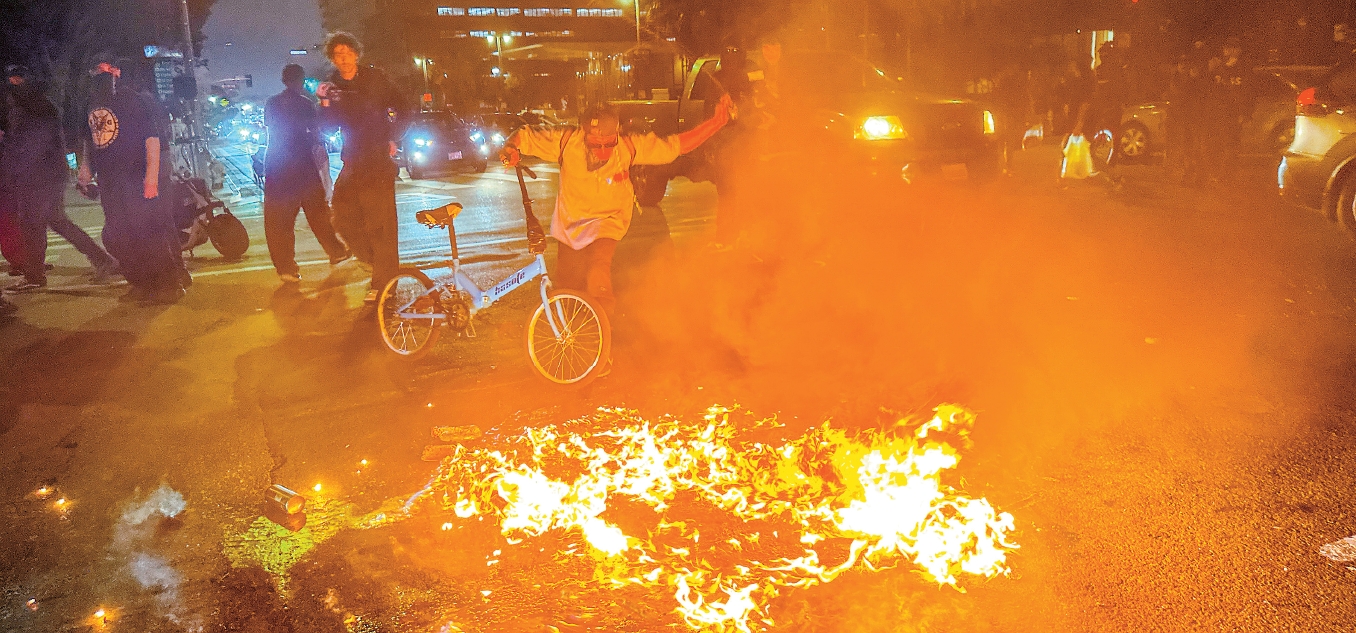The Trump administration has ordered the deployment of U.S. Marines to Los Angeles as protests against immigration enforcement continue for a fourth consecutive day. This marks the first time in 33 years that Marines have been sent to the city, following the 1992 LA riots.

On June 9, the administration announced plans to dispatch one battalion of Marines to respond to the protests, which it has labeled as riots.
Defense Secretary Pete Hegseth stated that approximately 700 Marines from the 2nd Battalion, 7th Regiment, 1st Marine Division, based in Twentynine Palms, about 140 miles east of LA, will join National Guard forces to secure federal buildings and assist in protest response. Their arrival would bring the total number of deployed troops in the area to around 1,000, including 300 National Guard members.
Separately, ABC7 News reported that California Governor Gavin Newsom said the administration had also ordered an additional 2,000 National Guard troops to be deployed.
Governor Gavin Newsom wrote on X, “The Marines have honorably served to protect democracy. They should never be deployed against their own people on American soil.” A day earlier, Newsom had submitted a formal request to the Department of Defense for the withdrawal of National Guard troops and filed a lawsuit on June 9 claiming the deployment was unconstitutional. Authority over the National Guard is shared by both the President and state governors.
Protests Spread Across Cities as Downtown LA Access Tightens
The protests, which began in LA, have expanded to Orange County, San Francisco, and Chicago. On June 9, the number of demonstrators in LA dropped to about half of the previous day’s count of over 1,000. This decline followed the Los Angeles Police Department (LAPD)’s designation of downtown LA as a restricted protest zone on June 8.
That day, protesters gathered in several locations, including Grand Park in front of City Hall, the U.S. Citizenship and Immigration Services (USCIS) building, the Metropolitan Detention Center, the Edward R. Roybal Federal Building, and El Pueblo de Los Angeles Historical Monument near Union Station. They called for the release of detained undocumented immigrants and arrested protesters.
Approximately 300 protesters confronted federal agents and National Guard personnel near the USCIS building at Los Angeles Street and Temple Street starting at noon. Another group of around 200 people continued their demonstration at El Pueblo Historical Monument.
To prevent clashes between protesters and troops, the LAPD and Los Angeles County Sheriff’s Department (LASD) established security perimeters around federal sites. Though tensions ran high, no major confrontations were reported on June 9, unlike the previous day.
Protests Intensify Beyond LA as Arrests Mount
In Santa Ana, Orange County, an estimated 100 to 150 people gathered around a federal building to protest the immigration raids.
The demonstrations are reportedly led by immigrant rights and labor advocacy groups.
On June 9, members of the Service Employees International Union (SEIU) gathered outside the federal courthouse in downtown LA demanding the release of David Huerta, SEIU California Chair, who had been arrested on June 6 for allegedly obstructing law enforcement. He was released later that day after posting $50,000 bail.
Immigration and Customs Enforcement (ICE) reported that it had arrested more than 118 people in Southern California since June 6, including undocumented immigrants. ICE emphasized that the arrests were part of ongoing operations and not directly related to the protests.
The LAPD said it arrested 29 people during protests on June 8. According to ABC7 News, citing local and federal law enforcement agencies, over 70 individuals were arrested across Southern California over the weekend for offenses including arson, violence, and obstruction of law enforcement.
In San Francisco, police reported the arrest of 60 people on June 8 during similar protests. That same day, demonstrations opposing ICE enforcement also took place in the Pilsen neighborhood in southwest Chicago.
BY HYOUNGJAE KIM [kim.ian@koreadaily.com]




